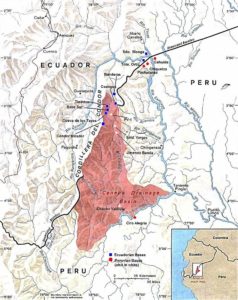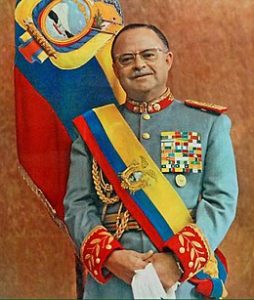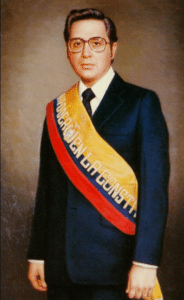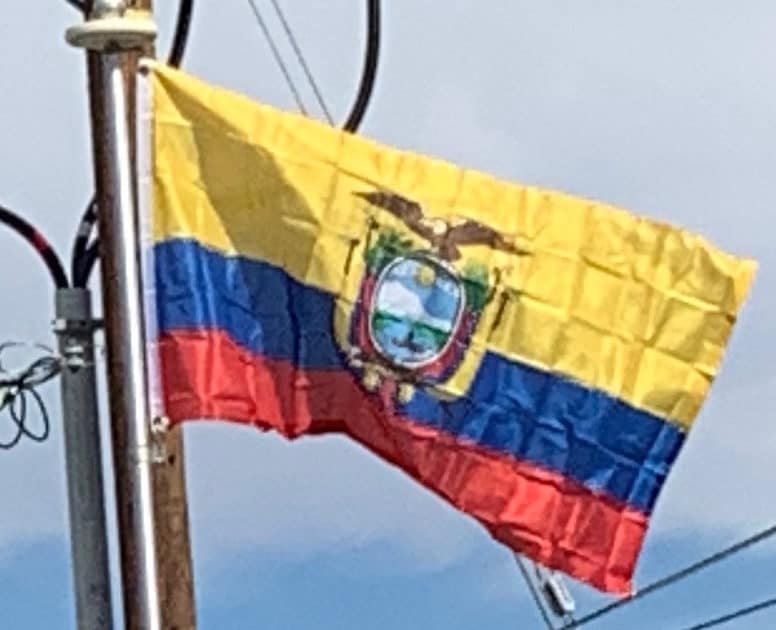
Ecuador and Peru signed the Brasilia Presidential Act peace agreement on October 26, 1998, which ended hostilities, and effectively put an end to the Western Hemisphere’s longest running territorial dispute. The Guarantors of the Rio Protocol (Argentina, Brazil, Chile, and the United States of America) ruled that the border of the undelineated zone was to be set at the line of the Cordillera del Cóndor. While Ecuador had to give up its decades-old territorial claims to the eastern slopes of the Cordillera, as well as to the entire western area of Cenepa headwaters, Peru was compelled to give to Ecuador, in perpetual lease but without sovereignty, 1 km2 (0.39 sq mi) of its territory, in the area where the Ecuadorian base of Tiwinza – focal point of the war – had been located within Peruvian soil and which the Ecuadorian Army held during the conflict. The final border demarcation came into effect on May 13, 1999 and the multi-national MOMEP (Military Observer Mission for Ecuador and Peru) troop deployment withdrew on June 17, 1999.
Military Governments (1972–79):
In 1972, a “revolutionary and nationalist” military junta overthrew the government of Velasco Ibarra. The coup d’état was led by General Guillermo Rodríguez and executed by navy commander Jorge Queirolo G.

The new president exiled José María Velasco to Argentina. He remained in power until 1976, when he was removed by another military government. That military junta was led by Admiral Alfredo Poveda, who was declared chairman of the Supreme Council. The Supreme Council included two other members: General Guillermo Durán Arcentales and General Luis Leoro Franco. The civil society more and more insistently called for democratic elections. Colonel Richelieu Levoyer, Government Minister, proposed and implemented a Plan to return to the constitutional system through universal elections. This plan enabled the new democratically elected president to assume the duties of the executive office.
Return to Democracy:
Elections were held on April 29, 1979, under a new constitution. Jaime Roldós Aguilera was elected president, garnering over one million votes, the most in Ecuadorian history. He took office on August 10, as the first constitutionally elected president after nearly a decade of civilian and military dictatorships. In 1980, he founded the Partido Pueblo, Cambio y Democracia (People, Change, and Democracy Party) after withdrawing from the Concentración de Fuerzas Populares (Popular Forces Concentration) and governed until May 24, 1981, when he died along with his wife and the minister of defense, Marco Subia Martinez, when his Air Force plane crashed in heavy rain near the Peruvian border. Many people believe that he was assassinated by the CIA, given the multiple death threats leveled against him because of his reformist agenda, deaths in automobile crashes of two key witnesses before they could testify during the investigation, and the sometimes contradictory accounts of the incident.

Roldos was immediately succeeded by Vice President Osvaldo Hurtado, who was followed in 1984 by León Febres Cordero from the Social Christian Party. Rodrigo Borja Cevallos of the Democratic Left (Izquierda Democrática, or ID) party won the presidency in 1988, running in the runoff election against Abdalá Bucaram (brother in law of Jaime Roldos and founder of the Ecuadorian Roldosist Party). His government was committed to improving human rights protection and carried out some reforms, notably an opening of Ecuador to foreign trade. The Borja government concluded an accord leading to the disbanding of the small terrorist group, “¡Alfaro Vive, Carajo!” (“Alfaro Lives, Dammit!”), named after Eloy Alfaro. However, continuing economic problems undermined the popularity of the ID, and opposition parties gained control of Congress in 1999.
